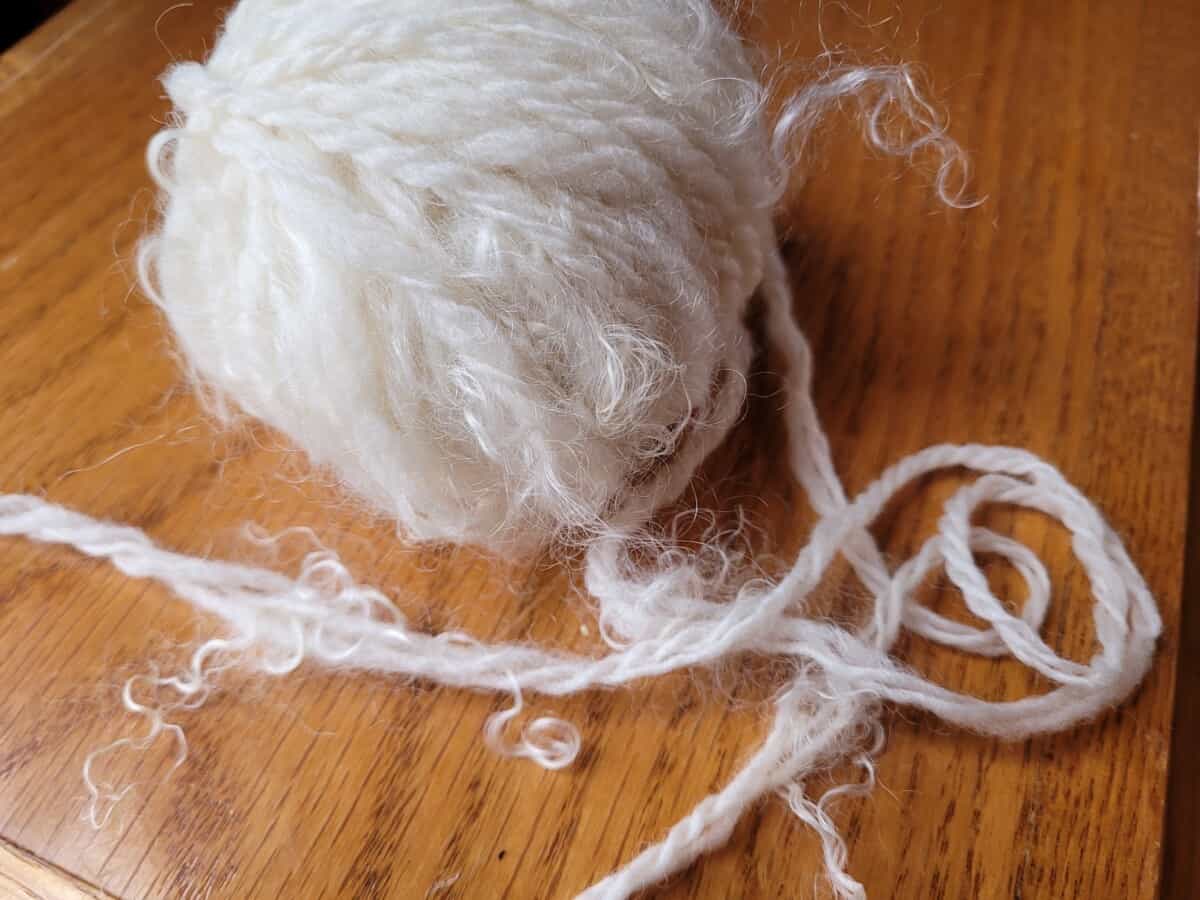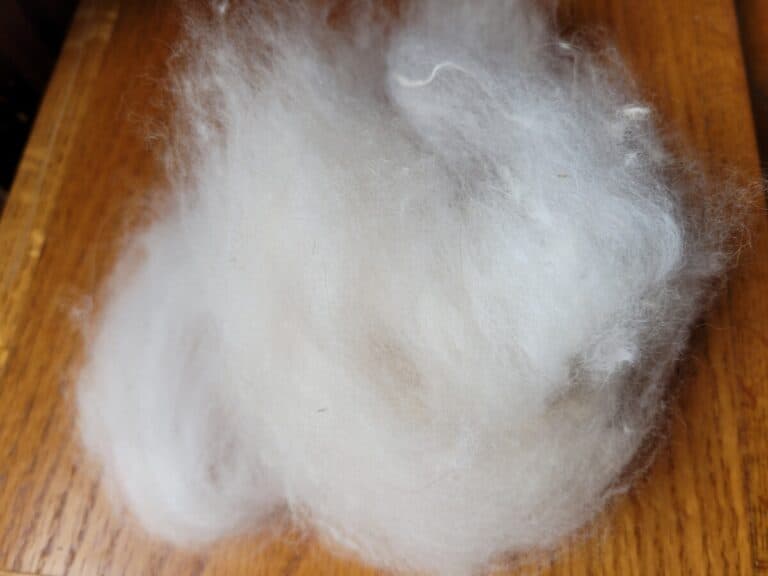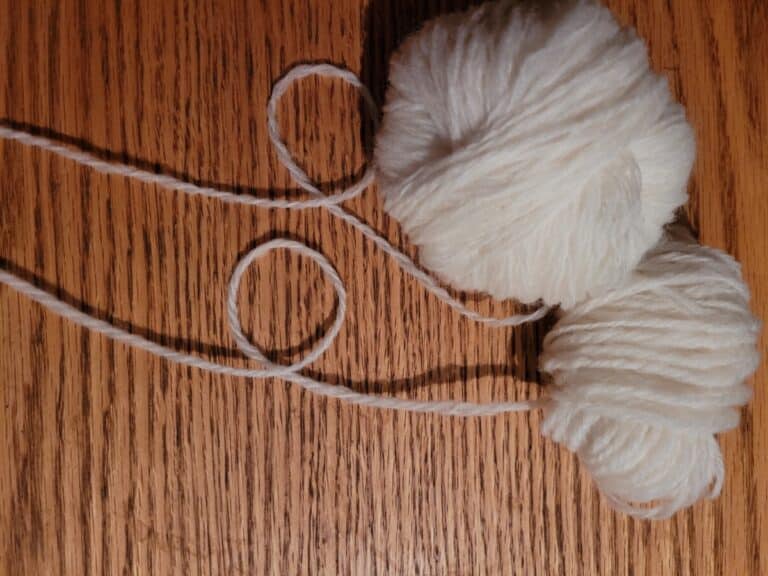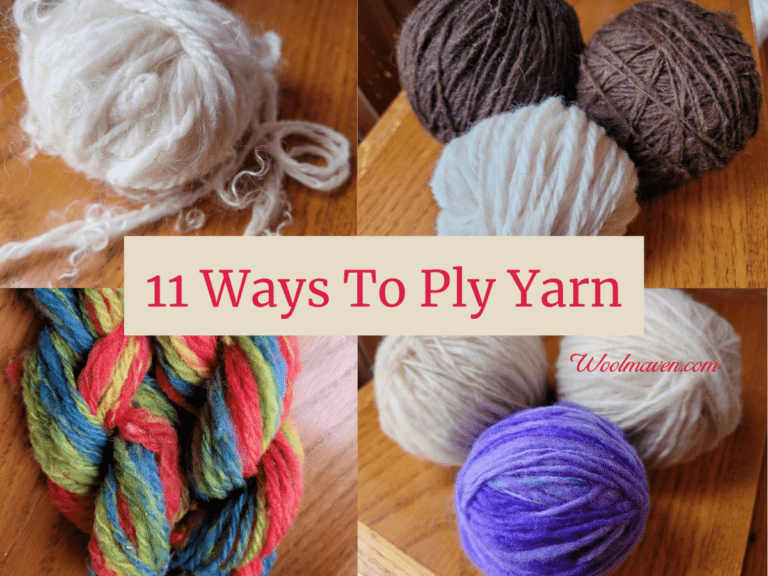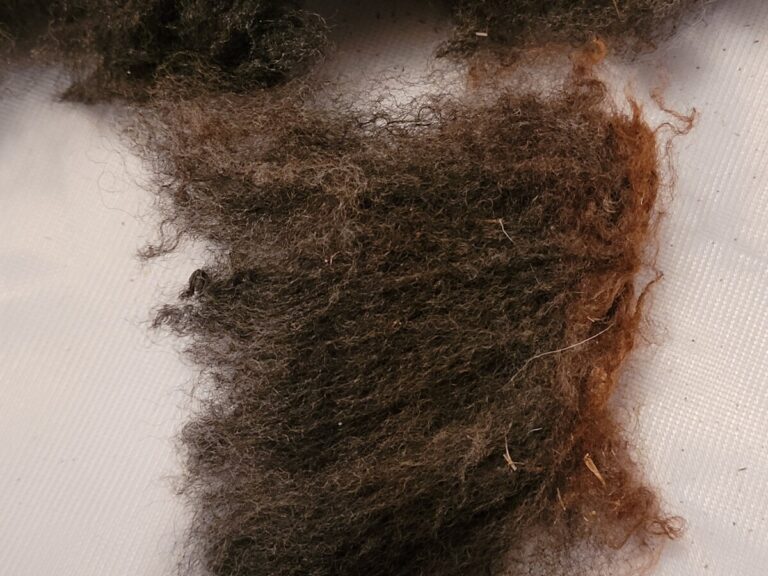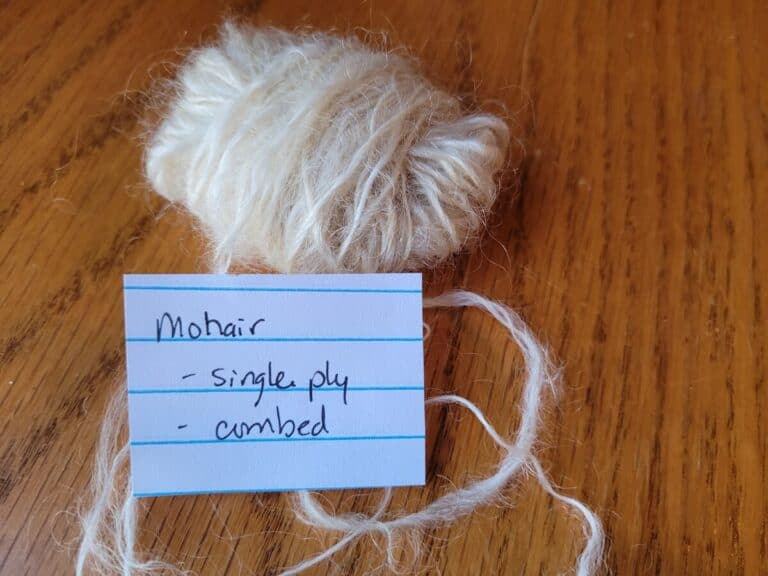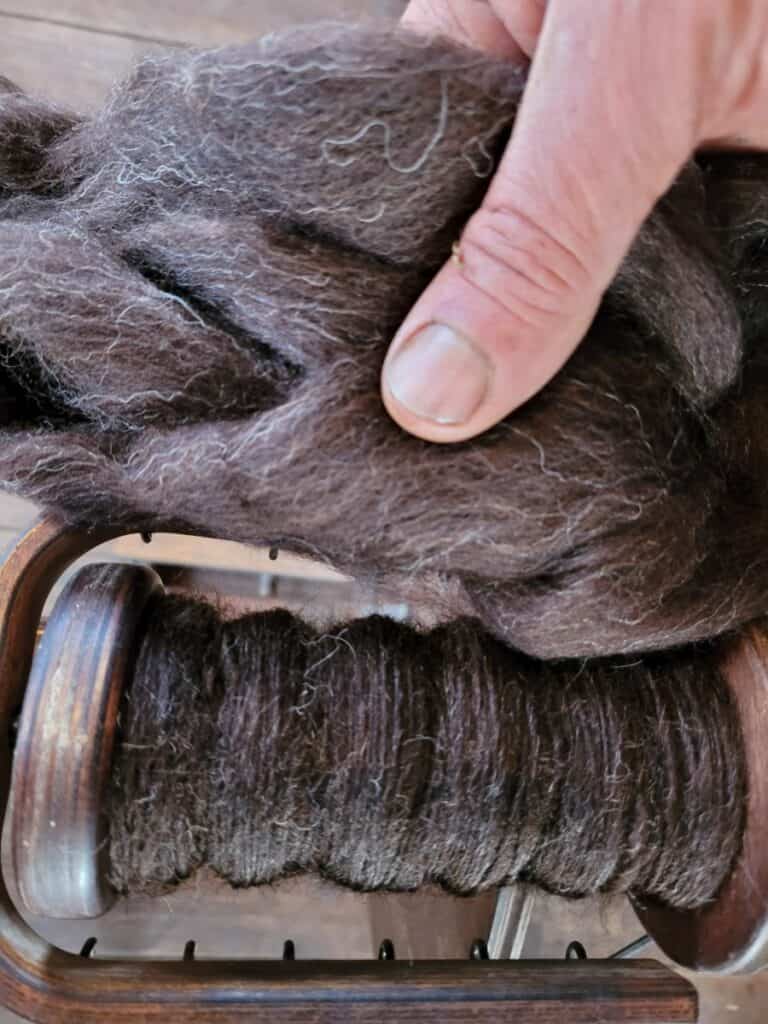Pros And Cons Of Handspinning Wool Yarn
Handspinning wool yarn is a popular hobby with the craft minded of all ages and backgrounds, and, like most anything else, handspinning wool yarn has some good points and some not so good points.
What are the pros and cons of handspinning wool yarn?
Is Spinning Your Own Yarn Worth It? goes over the costs and benefits of handspinning versus buying wool yarns.
Handspinning wool into yarn is relaxing
For me, the biggest plus of handspinning wool into yarn is that handspinning is relaxing.
It is nice to start spinning and take my attention off of the rest of the world and enjoy a bit of calm.
I’m not sure what it is about handspinning that makes it so appealing, but whatever it is, it’s definitely a plus for me!
Hanspinning equipment and tools are long lasting
Once you get your handspinning equipment, you’ll have yourself set for a life time of use. Sincerely, handspinning tools are built to last.
I bought my spinning wheel around 20 years ago and it works great with no upkeep from me, at all. The only thing I had to do was replace the tension band that was mysteriously cut by some renegade scissors.
Other than than, my wheel and my hand cards are great, still working beautifully after two decades of use.
Granted, I tend to spin in phases, a lot of spinning then none for a while, but they are holding up perfectly, so far.
And, actually, I have not heard otherwise from other handspinners. Normally, when someone orders another set of hand carders, for instance, it’s because they want an additional set or are new.
I’m sure equipment is occasionally broken or needs replaced, but overall, handspinning tools and equipment seem to be long lasting purchases.
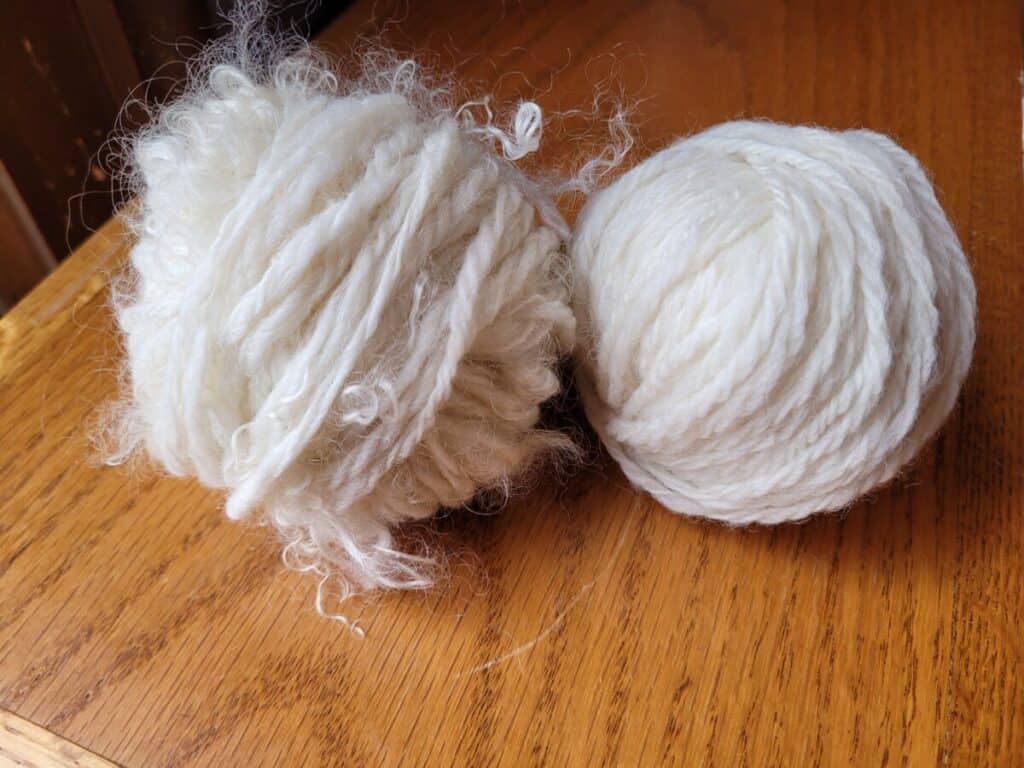
Spinning wool is an all age friendly hobby
Another great thing about handspinning is that it is an all age, all background friendly skill.
Once a child is old enough to write and focus on a task, s/he is old enough to give spinning a try.
The crazy part about spinning is that if you are willing, anyone with a normal amount of dexterity at any age can learn to spin. I didn’t learn until I was in my 20’s, and am mostly self taught.
The gal I bought the wheel from showed me how to use it, then the rest was me and a few books.
With all of the great videos online, you can learn to spin from home with the teacher of your choice!
The funny thing is that you just need one person to show you how to spin, then you can spread the hobby to anyone who is interested.
Spinning yarn is easy to do at home
Spinning yarn is pretty easy to do at home.
You just need a small area to set up the wheel and a chair, that’s it! You can get your spinning fiber shipped to you or you can go to a shop or event to stock up.
When you are spinning, you can also be hanging out with friends, watching a video or podcast (my favorite!) or just relaxing by yourself.
To set the yarn, you need hot water and a bowl. This is all such basic stuff, available nearly anywhere. It’s truly impressive how universal spinning wool really is.
Best Roving For Beginners points you to my favorite beginner friendly wool, plus gives you a few other wools to get next, once you are comfortable with the wheel.
Handspinning is a portable hobby
If you are so inclined, you can also take your spinning with you.
I like to work outside on nice, summer days, especially if I am working with raw wool, which is my preference, since the warm wool spins so well.
There are also gatherings, like spinning guilds or festivals where bringing your wheel and hanging out with other spinning enthusiasts is an integral part of the experience.
What I’m trying to show here is that you can move to a spot that suits you for the day or you can plan to spin at an event, just to hang out with other folks who also love wool.
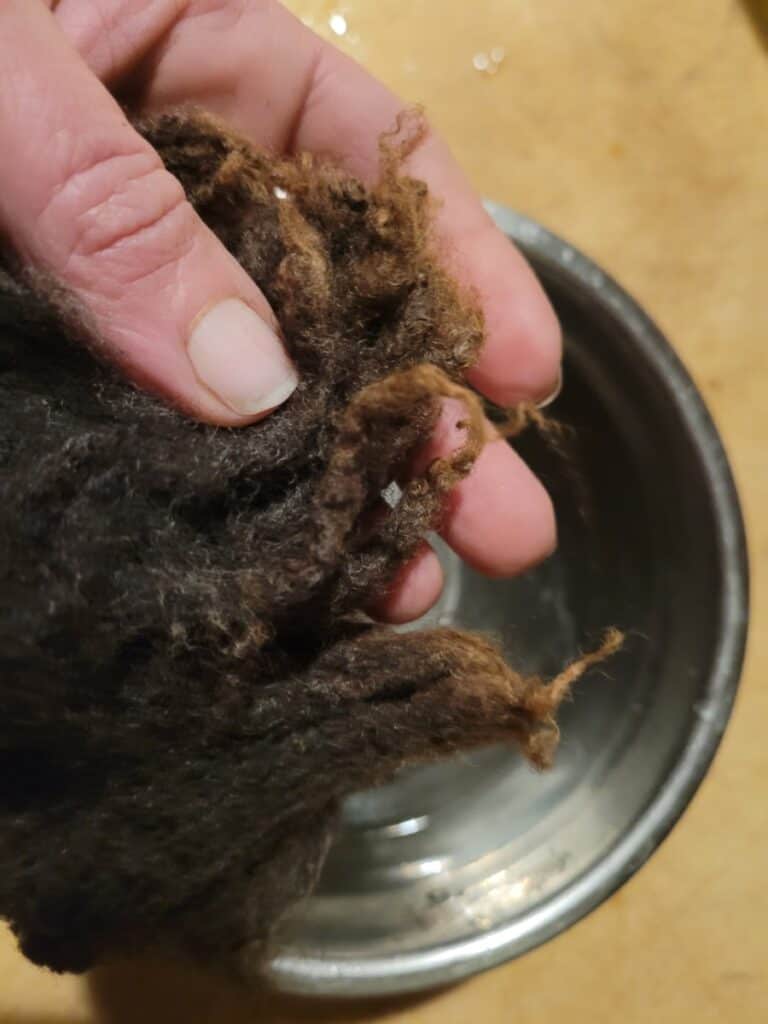
You can use own or local wool
One of the most wonderful parts of handspinning is that you can use nearly any wool, really you are only limited by what you can imagine.
All wools can be handspun, it’s just a matter of matching up the wool you have available with the spinning project you have planned.
If you are fortunate enough to have your own sheep or have a neighbor who has sheep, you can spin wool that is as local as it gets!
We have our own sheep, so I like to use some of our wool. We have commercial sheep, so the wool is not anything special, but it is a nice, usable wool that I have plenty of.
If I want to make something special or work with a specific wool, I can order some fiber from another sheep farmer with the wool I’m looking for, but if I am just wanting to spin something, I’ll use our wool.
Ask around if you have wool sheep in your area, most folks that raise sheep are not getting great prices for their wool right now. You may be pleasantly surprised at the price they want for it.
Handspinning reduces price of art/specialty yarns you use
If you love to knit, crochet or weave with specialty or art yarns, then you know that those beautiful one of a kind yarns come with a bit of a higher price tag, but not for you, if you make them yourself!
True, the materials to make the yarn will still cost you, you’ll have some time into making the yarns and maybe you’ll need to purchase or make a blending board, so there are up front costs.
However, those up front costs will be recovered quickly if you compare the cost of supplies to buying that same wonderful unique yarn from another handcrafter.
Handspun yarn is a potential business opportunity
If you are so inclined, handspinning wool yarns can be a business opportunity. Many talented handspinners, who started out as a beginner, just like you, are selling their yarns online.
I have done the math one art or specialty yarns and you can buy the fiber to make them for $2-5 per skein, obviously depending upon what specific fiber you buy.
Any price charged per skein of yarn on top of that fiber cost is what you make for your work. At a low average of $15 per 2 ounce skein, that means you are keeping $10 per skein.
Granted, keeping $10 per skein will not make you a mega millionaire, because you are limited by your time, but it will fund your spinning and be a nice side hustle for you, if you choose to pursue it.
There are many spinnable fiber options
There are tons of spinnable fiber options available to the handspinner.
I love to work with a new to me wool and see what happens when I spin it, it’s so interesting the difference between breed specific wools.
Plus, there are other non wool options, like silk or spinnable plant fibers to blend in with your wools, too, not to mention a nearly endless choice of color, especially if you learn to dye yourself!
You have to learn the skill of handspinning
The biggest potential drawback of spinning yarn is the learning curve of getting started.
No two ways around it, learning to spin will take some work and be a source of some frustration, at first.
If you are willing to stick with it, even just a little, you’ll see that you gradually get better and in the first 20 hours will make an incredible amount of progress.
It takes time to handspin yarn
The second con of handspinning yarn is the other side of the relaxing part, it will take time to get the yarn spun.
This is a highlight for me, since I like to spin more than I like to knit or crochet, but for the person who just wants hand made yarn, the time to spin it yourself may not be worth it to you.
Most handspinners need to purchase supplies
Most folks who handspin will need to purchase at least some supplies, by this I mean both the equipment, like the wheel and cards or combs and the fiber supply, which will be repeatedly purchased.
If you are fortunate to come across a used set of equipment or have a wheel available, you’ll still need to source your wool. Which is definitely possible to get at little to no cost, but you’ll have to seek it out.
Most handspinners will be buying ready to spin prepared roving or more likely, combed top, so this will need to be continuously purchased as it is used.
The other potential hold up with supplies is that you may have wool available to you that is not what you are capable of spinning, at least as a beginner.
Or the wool may not suit your project, meaning you’ll need to find or buy something else.
You have limited production ability
The final potential con of handspinning yarn is that you are limited in your ability to produce yarn, since you are one person who can only spin one thing at a time.
Of course, you will get much better as you learn to spin, compared to your speed of yarn production at first, but you will still have a limit of what you can do per hour.
For most folks, this is part of the beauty of handspinning yarn, that it is a product of love, time and creativity, but if you just want yarn fast, you are probably better off to order it already spun for you.
The Joy Of Handspinning has a nice, short overview of the main wool types and which ones are best for you based on your skill as a spinner and your project.

